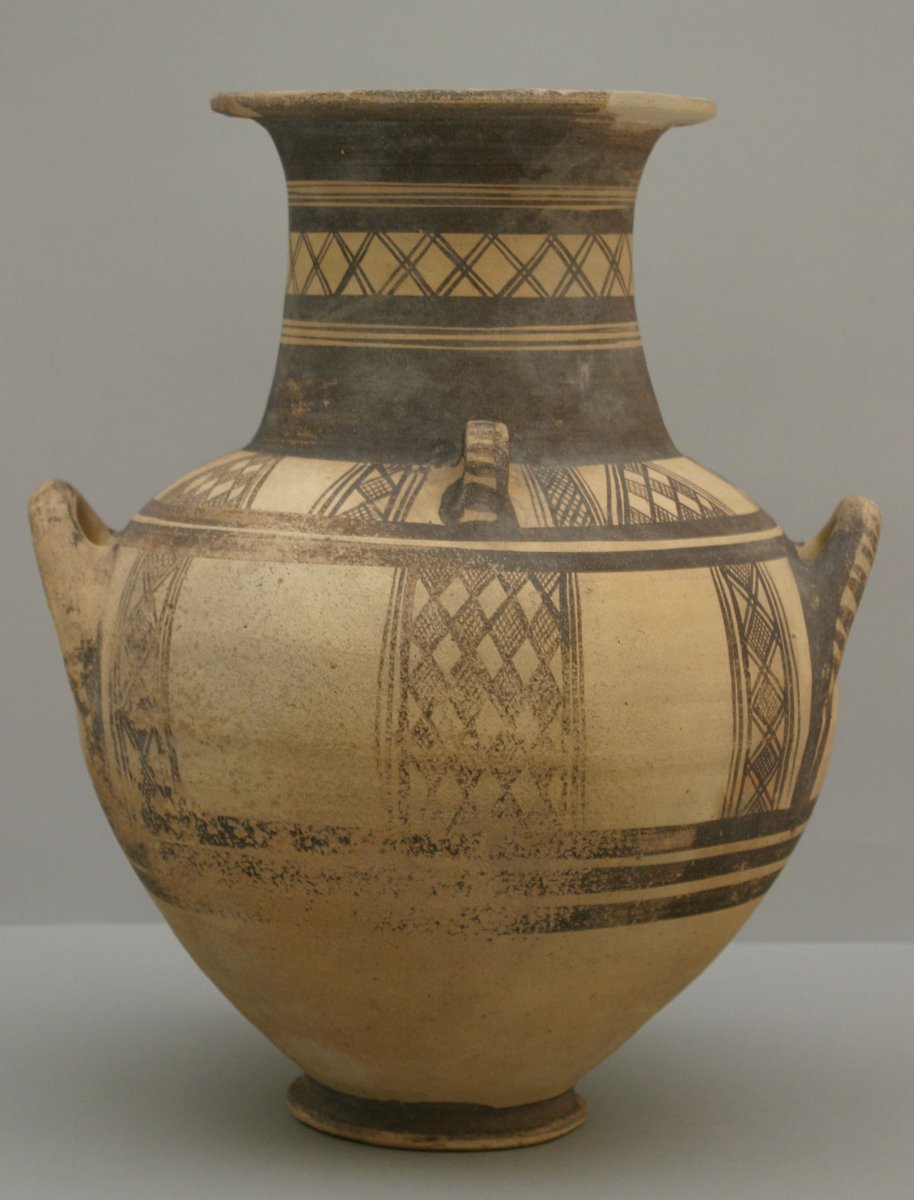
Geometric Hydria (water-jar)
Classical Antiquities
| Date | 3rd century A.D. |
|---|---|
| Object type | mosaic |
| Medium, technique | stone, glass |
| Dimensions | 97 × 113.5 cm |
| Inventory number | 2005.7.A |
| Collection | Classical Antiquities |
| On view | Museum of Fine Arts, Basement Floor, Classical Antiquity, Hellas – Italy – Rome |
The arched hexagonal picture, now set in a modern bronze frame, is bordered with broken meander patterns, and portrays the hero seated on a rock. There is a tree (laurel?) beside him, with a songbird perched on it. Orpheus wears a short tunic, a cape hanging down his left side and held together with a fibula at his right shoulder, snug-fitting pants and shoes. There is a Phrygian cap on his head. He is plucking a four-stringed lyre held in his left hand, with a plectrum in his right. The bulk of the mosaic is composed of 5-8 mm tesserae, but for the finer details, such as the face or the fingers on the left hand, much smaller pieces of mosaic were used in a rich variety of colours and hues. The tesserae are complemented with glass pieces to enrich the colour effect.
The central region of North Africa, the province of Africa, was one of the richest parts of the Roman Empire. The agricultural production of its enormous estates (chiefly grain, grapes/wine and oil) played an essential role in the provision of the empire. Up to the Arab conquest in the 7th century, the art of the region also formed an integral part of the Graeco-Roman culture of the Mediterranean. Although North African art preserved its own characteristics – deriving primarily from the Phoenician-Punic tradition, whose influences prevailed even after the destruction of Carthage (146 B.C.) – it also became an organic part of the Hellenised artistic koine. Thus, it should not come as a surprise that Orpheus, one of the best known heroes of Greek mythology, should appear among the representations of North African mosaics.
Orpheus is the par excellence poet hero. It was generally held that his father was Apollo, and his mother the muse Calliope. He was most renowned for the risky deed of descending into the Underworld to reclaim his dead wife, Eurydice. The gods of the Underworld, enchanted by his song and the sound of his lyre, indeed returned his wife to him. The power of his music even tamed wild beasts – this scene was a frequent subject of Roman mosaic art, with Orpheus in the centre and animals surrounding him. The Budapest mosaic might also have been the central part of just such a large-scale composition covering the floor of a villa.
The figure of Orpheus became especially popular at the beginning of the 3rd century, when, following the death of Marcus Aurelius (180 A.D.), the crisis of the empire and classical Graeco-Roman culture became manifest. The image of the hero – descending even into the Underworld for the sake of his love and returning alive, charming wild beasts with his invincible music and recalling the harmony of the Golden Age – provided a diversity of interpretations depending on time, place and spiritual background. This is perfectly illustrated by the fact that his figure was taken over in an unchanged form by the art of early Christianity as a possible way of depicting Christ.
The only ancient mosaic in the Collection of Classical Antiquities was found in Tunisia in the 1940s. In the middle of the 20th century its owner moved to France, where it appeared in the international art market a few years ago.
Following ÁRPÁD MIKLÓS NAGY
This record is subject to revision due to ongoing research.